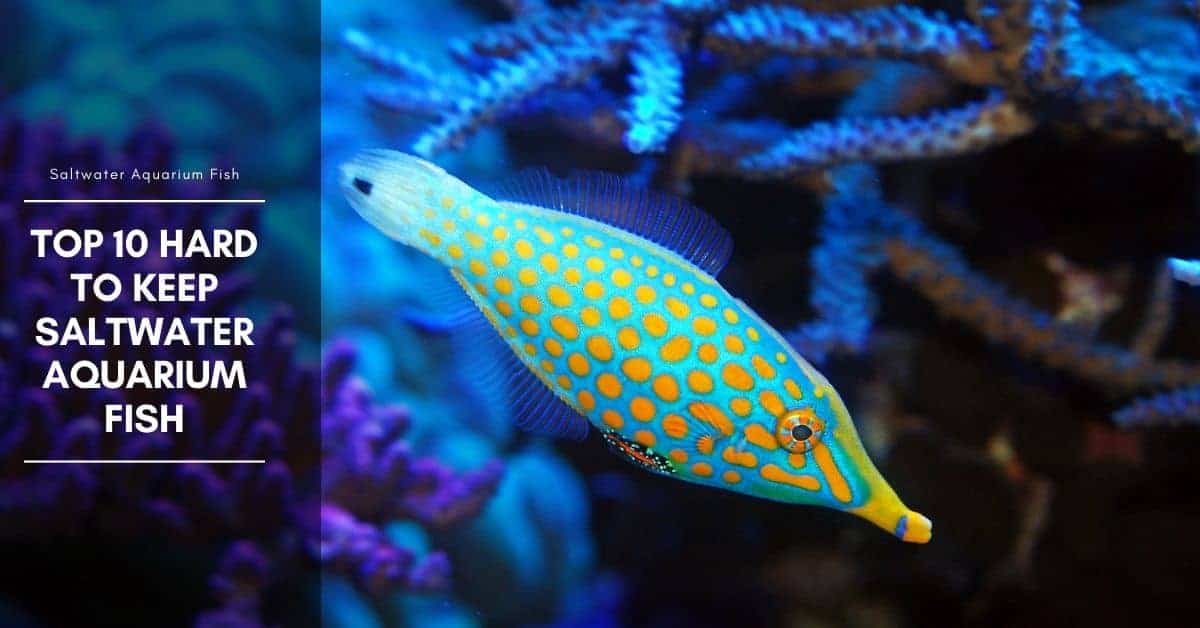Before we jump into this top 10 peaceful to keep saltwater fish, I want to add a little bit of context to the idea behind this post. My hope for this list is that it’s going to help educate people that are new to the hobby people that have been in the hobby only for a short amount of time and hope those folks potentially avoid making a mistake with purchasing one of these animals and not have the knowledge or skill set to take care of it.
So let’s jump into our top 10 list of fish that are best suited for experts and advanced fishkeepers only.
Princess Anthias (Pseudanthias Smithvanizi)
This fish is considered difficult to keep. It’s peaceful, and it’s temperament, coloration is absolutely amazing you can see in the picture here that pinks into the yellows with the yellow dots, and the fins are absolutely just a beautiful fish. It is considered reef safe, but like most Anthias, its diet is what makes it difficult to keep.
It requires a plankton type of food, in the size of 1.5 millimeters offered frequently throughout the day, and that’s really what makes it hard to keep. Not to mention that it doesn’t do very well in a quarantine tank, and this is a pretty rare fish. The fact that it needs to be kept in small groups is going to contribute to the idea that it isn’t gonna do very well in a reef aquarium, especially kept by somebody who is relatively new to the hobby.
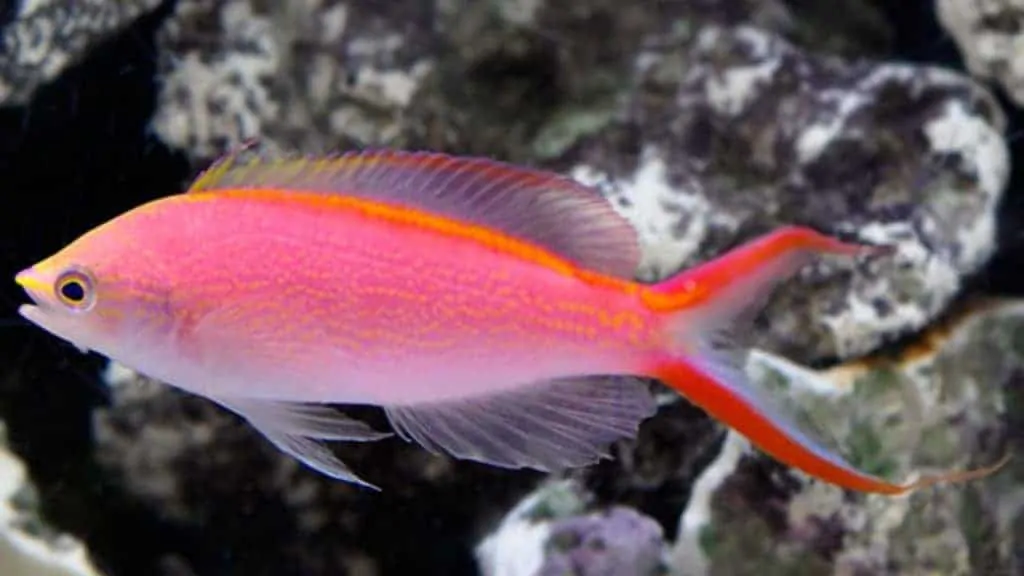
Blue Boxfish (Ostracion Meleagris)
This fish has a peaceful temperament, is an omnivore, is reef safe with caution, so it’s one of those fish that you’re not 100% certain what you’re gonna get when you get it. It can grow up to ten inches, so it’s absolutely huge. The minimum tank size for this fish is 180 gallons.
The problem with the Boxfish is not that it is hard to keep fish; it doesn’t require special foods or hundreds of feedings throughout the course of a day. The problem with this fish is if it becomes stress if it’s stressed, it actually produces a toxic, poisonous substance on its skin, and it can absolutely decimate your tank.
So this is a species that you would like to keep. It’s probably going to be better off to be kept alone in a species-specific setup.
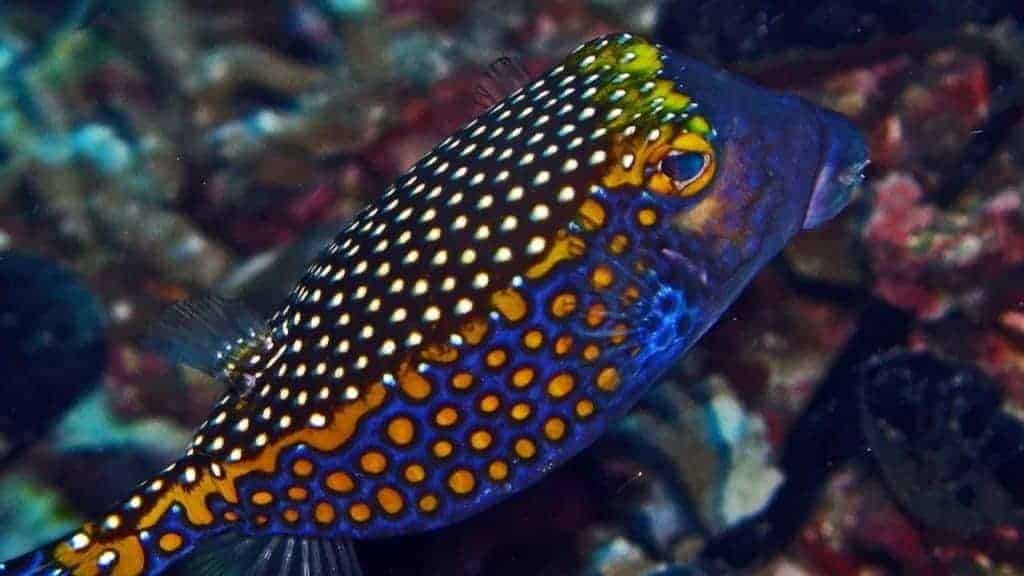
Regal angelfish (Pygoplites Diacanthus)
This is a fish that can grow upwards of 10 inches, and typically needs a tank of 150 gallons or more, and the reason that this fish is so hard to keep is the fact that it simply just doesn’t do well in captivity, and is often flat out refuses to eat, which eventually it comes to nutritional deficiencies.
So in the grand scheme of things, this is a fish that’s probably just better off to be left in the ocean and not attempt to be kept in a confined space such as an aquarium.
API STRESS COAT Aquarium Water Conditioner 16-Ounce Bottle
Tetra AquaSafe Plus, 8.45 Ounces, aquarium Water Conditioner And Dechlorinator, Model Number: 46798162681
$10.19 (as of November 17, 2025 23:55 GMT +03:00 - More infoProduct prices and availability are accurate as of the date/time indicated and are subject to change. Any price and availability information displayed on [relevant Amazon Site(s), as applicable] at the time of purchase will apply to the purchase of this product.)API TAP WATER CONDITIONER Aquarium Water Conditioner 16-Ounce Bottle
$8.48 (as of November 17, 2025 23:55 GMT +03:00 - More infoProduct prices and availability are accurate as of the date/time indicated and are subject to change. Any price and availability information displayed on [relevant Amazon Site(s), as applicable] at the time of purchase will apply to the purchase of this product.)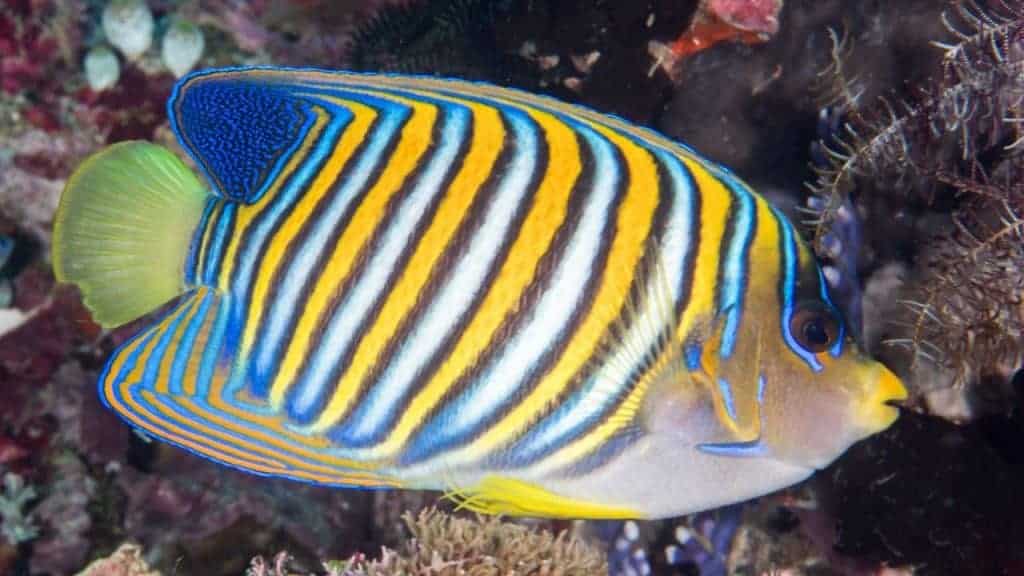
Orange spotted filefish (Oxymonacanthus Longirostris)
The orange-spotted filefish grows to 4.5-5 inches long and can be kept in a 55-gallon aquarium. The interesting thing about this peaceful fish is its diet. This fish feeds on the polyps of SPS corals, which makes for a very tricky dynamic in your reef tank because most of us that keep saltwater aquariums like to keep SPS corals.
But if you are interested in keeping an Orange spotted filefish, you need to be able to figure out and plan to be able to feed this fish, and not only that but have a sustainable food source for this fish, because it gets pretty expensive if you’re just going to the store and buying even the cheapest SPS coral, and bringing it back to the fish, and letting it chew it up, and then just constantly repeating that process.
That aside, this is probably one of the coolest looking filefish that I’ve ever seen, and I think it would be pretty interesting to have in a reef tank I’m just not willing to sacrifice my SPS corals for it.

Ribbon eel (Rhinomuraena Quaesita)
This eel can grow upwards of four feet, and it can be kept in an aquarium as small as 75 gallons, pretty interesting dynamic they’re four-foot fish in a 75-gallon tank. The blue ribbon eel comes in a number of different colors.
The juveniles are black until they mature, females are yellow, and males are blue. So with that, there’s a lot of different variations of this eel when it is coloring throughout its life.
As far as some ideas for keeping an eel, it’s better off to have plenty of hiding places, and if this is a fish that you plan on keeping, it’s not a bad idea when you’re setting up a tank to actually take PVC or lengths of PVC to have them work into the rock work, underneath the sand bed, so it can completely hide.
Because this is a pretty timid fish, even though that is a yield, it does prefer live foods and in some cases, will not accept food altogether. That’s why it’s typically regarded as harder to keep fish.
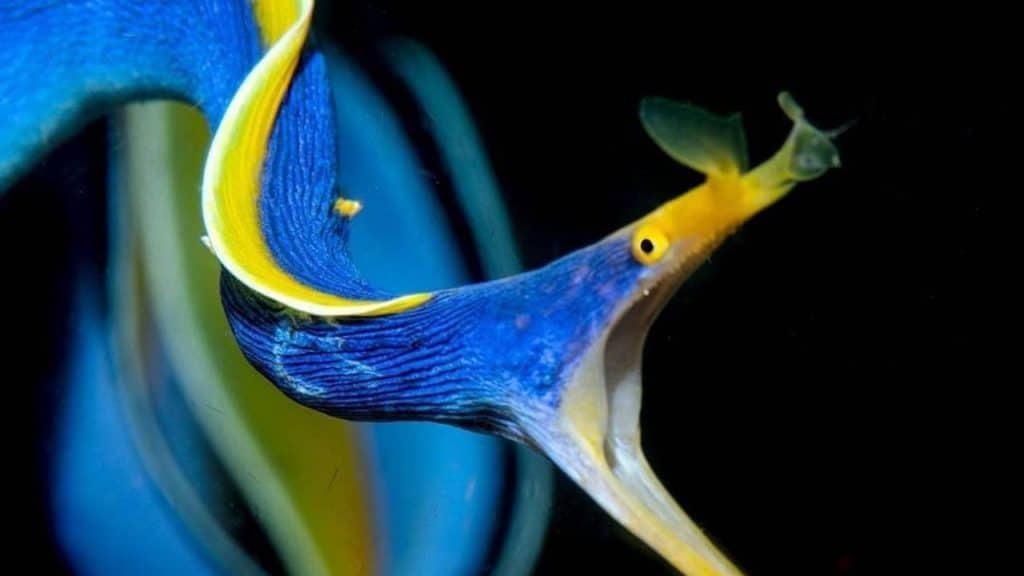
Harlequin sweetlips (Plectorhinchus Chaetodonoides)
This fish can grow upwards of 28 inches long. It requires a tank of 500 gallons or better, and that’s probably a little on the small side. The survival rate of these fish aren’t that great, they actually kind of hard to get them to eat, the ones that do eat, they need a huge aquarium.
So you’re dealing with a fish that’s going to get absolutely huge and their ability to survive in a home aquarium it’s probably slim to none, and it’s just a large fish and really should just be left in the ocean.
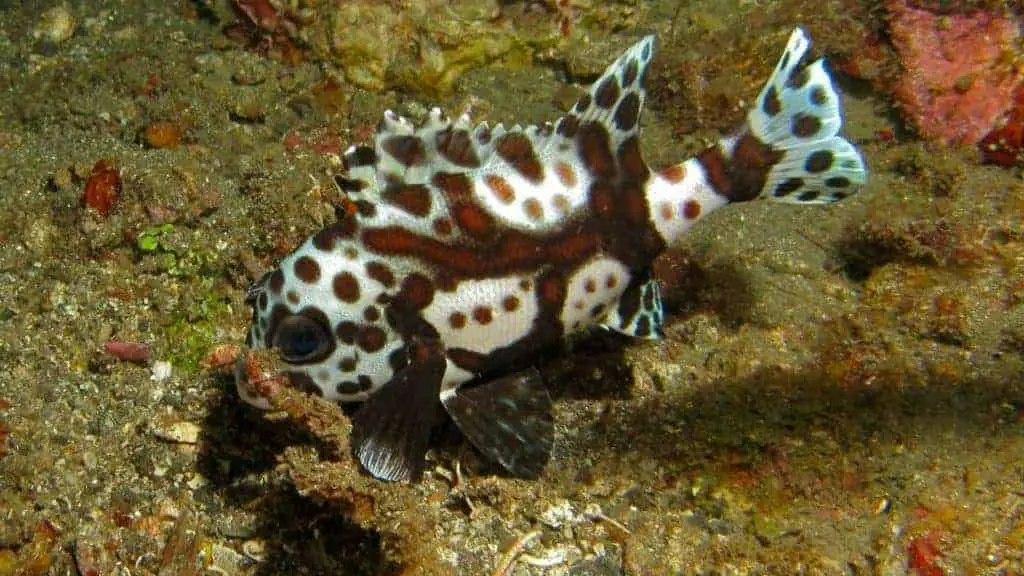
Mandarin dragonet (Synchiropus Splendidus)
This is probably hands down the hardest fish to keep that is most frequently found in a fish store, and a lot of people see this fish, and they absolutely fall in love with it. Its swimming is unique, the way it’s its personality is unique, and its colors are absolutely phenomenal.
The problem in this fish is its feeding requirements, and at this point in this post, most of the fish that are hard to keep it comes down to their individual personality and their feeding requirements, if it’s a docile fish that needs live or rare food, that is something that is going to make it more difficult to keep that fish.
The Mandarin dragonet needs a steady population of copepods, so even though that it’s ideal for our tank size of 20 gallons, that doesn’t mean that that tank size is going to have a good population of copepods. So unless you have that ability to access copepods, and constantly be introducing them to the tank, this is a saltwater fish that you probably want to avoid.
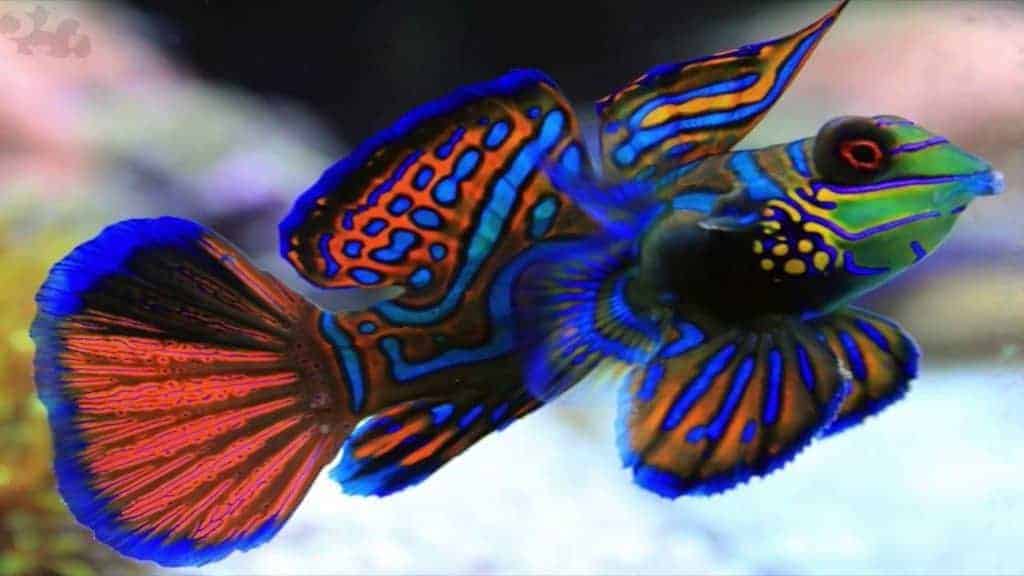
Longfin anthias (Pseudanthias Ventralis)
This fish is absolutely stunning, it grows to 2.5 inches. This saltwater fish is best for 55 gallon tank or bigger, and this is a deep water species of Anthias which 9 times out of ten, when we have problems with this fish is due to some type of swim bladder issue, from being raised up from the depths too quickly.
So if you are at the local fish store, and you see this fish swimming oddly, it’s probably best to avoid it. This fish requires ample feedings, so it needs to be fed at least five times a day, with lots of hiding spaces, and definitely does better in groups of five or more with one male and several females.
The crazy thing about this fish is, this picture actually doesn’t even do it injustice, which is absolutely mind-blowing.
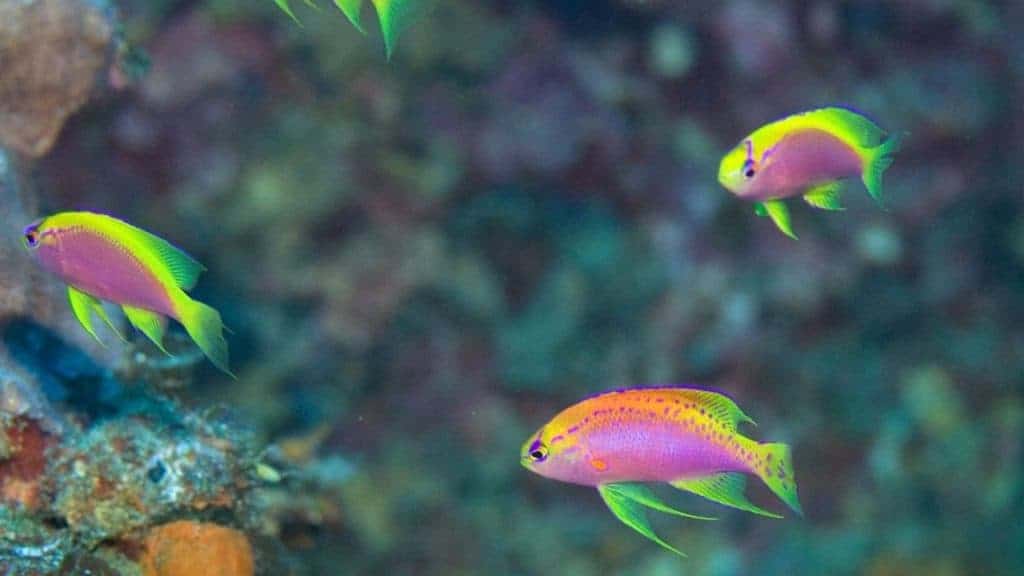
Blacktail butterflyfish (Chaetodon Austriacus)
This fish grows upwards of 5 inches and requires a tank of 125 gallons or more. This fish is absolutely beautiful; the drawback is it eats coral. It eats LPS, it eats SPS, and it has a special desire for Acropora, and it has been recorded, that this fish has taken 90 bites out of an SPS coral in 20 minutes. Ninety bites… that is insane.
So if you have some deep pockets, and aren’t really that big on coral, and think that this fish is absolutely amazing, it’s probably the right fish for you.
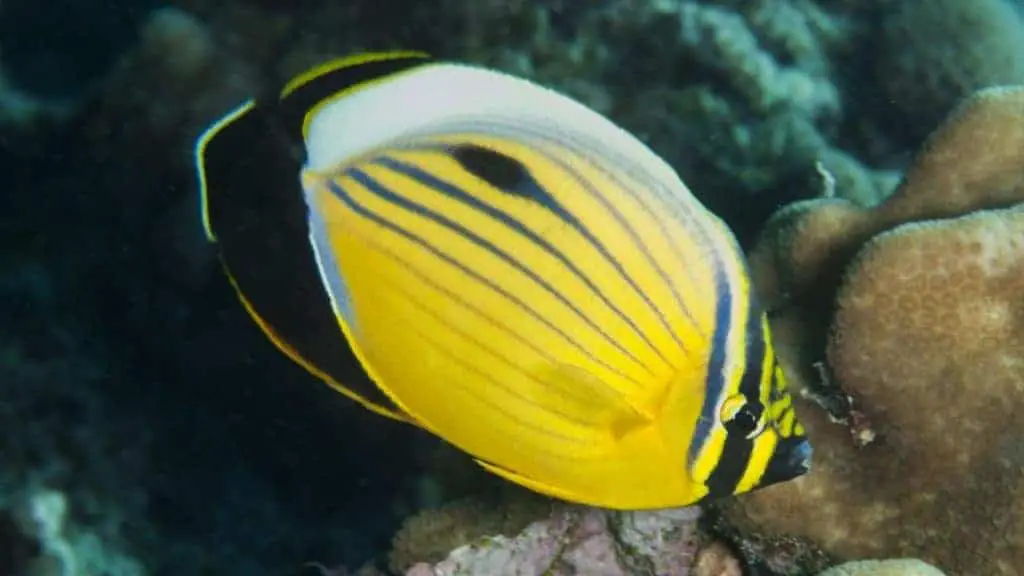
Spikefin Goby (Discordipinna Griessingeri)
This little guy grows a max of one inch; it requires a tank of 2 gallons or more. You’re actually better off to have this in a smaller tank because they are prone to just disappearing in the tank, and never being seen again.
So if it were me, I definitely would be putting this little guy in a small Pico reef, probably species-specific display tank, and keeping the hiding spaces to a minimum. With all that aside, this is probably one of the gorgeous gobies I have ever seen in this hobby.
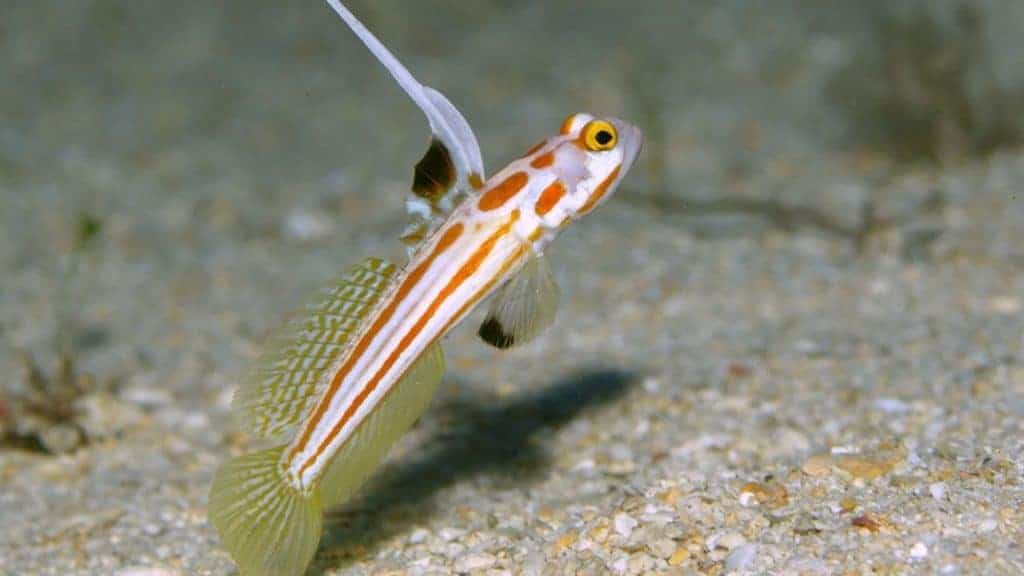

Hi, my name is Sean, and I’m the primary writer on the site. I’m blogging mostly about freshwater and saltwater aquariums, fish, invertebrates, and plants. I’m experienced in the fishkeeping hobby for many years. Over the years I have kept many tanks, and have recently begun getting more serious in wanting to become a professional aquarist. All my knowledge comes from experience and reading forums and a lot of informative sites. In pursuit of becoming a professional, I also want to inspire as many people as I can to pick up this hobby and keep the public interest growing.
Read more about Sean.
Please join also my Facebook group.

